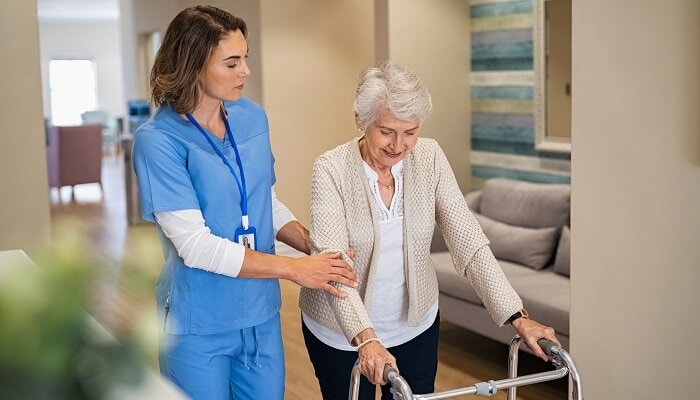The shift toward person-centered care (PCC) in nursing homes marks a crucial evolution in the philosophy of elder care. This model prioritizes the individual needs and preferences of residents, treating them not just as patients but as whole persons with distinct histories, preferences, and goals. The implementation of PCC involves organizational transformation, from administrative practices to direct resident interactions, requiring commitment across all levels of staff. This transition, while complex, offers profound benefits in resident satisfaction and overall quality of life, making it an essential progression in modern healthcare.
Definition and Principles of Person-Centered Care
Person-centered care is defined by its holistic approach to treating individuals, focusing on their total well-being rather than just their medical conditions. This approach is grounded in respect for residents’ autonomy, choice, and participation in their care. Core principles include recognizing the intrinsic value of each person, understanding their unique life story, and incorporating their preferences and choices into the daily operational routine. This requires a cultural shift within the facility, where care routines are flexible and adapted to the individual’s life rhythm rather than making individuals fit into a pre-determined care schedule.
Technological Innovations Supporting Person-Centered Care
Innovative technologies are integral to the successful implementation of PCC. They not only streamline operations but also enhance the quality of care. For example, personalized care plans can be more easily managed and updated through digital platforms that allow for better tracking of residents’ health changes over time. Interactive technologies, such as tablets and mobile apps, enable residents to stay connected with their families and manage their social interactions, which is crucial for mental health. Additionally, wearable devices can monitor vital signs and detect falls, ensuring immediate care responses, which is particularly important for residents with high-risk conditions.
Addressing the Diverse Needs of Residents
Effective PCC requires acknowledging and catering to the diverse needs of continuing care retirement community residents, which include cultural, spiritual, emotional, and physical aspects. Programs tailored to diverse backgrounds and languages, access to spiritual or religious services, and opportunities for meaningful social connections are all crucial. Activities should be designed to engage residents in a meaningful way, based on their interests and abilities, thus supporting not only their physical health but also their mental and emotional well-being. This might include art therapy, musical entertainment, or pet therapy, all facilitated in a way that honors each resident’s preferences.
Training and Education for Staff
Training for PCC extends beyond clinical skills to include interpersonal and communication skills that foster a deeper connection with residents. Staff training programs should include modules on cultural competency, ethics in elder care, and the psychological aspects of aging. Simulations and role-playing can be effective methods for teaching staff how to handle various real-life scenarios they might encounter, encouraging empathy, and improving decision-making skills in line with PCC principles.
Regulatory and Policy Framework
To support the adoption of PCC, regulatory bodies and policymakers need to establish guidelines that encourage flexibility in care practices while ensuring safety and quality. These might include regulations that favor smaller, more homelike care settings, requirements for staffing ratios that allow more personalized care, and incentives for facilities that demonstrate innovation in resident engagement and satisfaction. Additionally, advocacy for resident rights must be a priority, ensuring that policies enhance the quality of life and protect those in long-term care.
Financial and Operational Considerations
Transitioning to PCC often involves initial investments in staff training, technology upgrades, and possibly even facility remodeling to create more homelike environments. However, these costs are generally offset by long-term benefits such as reduced hospital readmissions, lower medication costs due to better overall wellness, and increased satisfaction among residents and their families, which can lead to higher occupancy rates. Effective financial management, therefore, involves forecasting these benefits and planning for initial expenditures to ensure sustainability.
Future Directions in Person-Centered Care
The future of PCC is likely to see an integration of even more advanced technologies, such as AI and machine learning, to predict resident needs and adapt care practices accordingly. There will also be a greater emphasis on community integration, where nursing homes act not just as care facilities but as vibrant parts of the larger community. This could involve more outreach programs, community volunteer involvement, and partnerships with educational institutions to keep residents actively connected to the world around them.
Conclusion
Person-centered care is the cornerstone of contemporary nursing home care, essential for ensuring that residents lead dignified, fulfilling lives. As healthcare evolves, the principles of PCC provide a guiding framework for delivering not only efficient care but also compassionate and respectful care that acknowledges the whole person. By embracing these strategies, nursing homes can truly transform the care experience for their residents, making each day meaningful and enriched.
Pat Baker has experience as a dementia caregiver, enjoys helping others, and writes for retirement communities in the Philadelphia area.


















